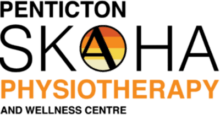Have you ever heard of osteopathic massage? This unique form of bodywork combines the principles of osteopathy with traditional massage techniques to promote healing and wellness. In this blog post, we will explore the benefits of osteopathic massage and discuss the injuries it can heal. Whether you are looking to relieve pain, improve flexibility, or simply relax, osteopathic massage may be just what you need.
Osteopathic massage is a holistic healthcare approach that focuses on treating the body. Unlike traditional massage therapy, which primarily targets muscles and soft tissues, osteopathic massage also considers the alignment and function of bones, joints, and organs. By addressing structural imbalances and restrictions in the body, osteopathic massage can help alleviate pain, improve mobility, and enhance overall well-being.
One of the key benefits of osteopathic massage is its ability to promote circulation and lymphatic drainage. By applying gentle pressure and stretching movements to specific areas of the body, osteopathic massage can help increase blood flow, reduce inflammation, and support the body’s natural detoxification processes. This can be especially beneficial for individuals with chronic pain conditions or inflammatory disorders.
In addition to promoting physical healing, osteopathic massage can also have a profound impact on mental and emotional well-being. The deep relaxation and stress relief provided by this form of bodywork can help reduce anxiety, improve sleep quality, and enhance mood. Many people find that regular sessions of osteopathic massage not only help them feel better physically but also provide a sense of calm and balance in their lives.
Conditions treated by Osteopathic Massage
Osteopathic massage is an alternative to traditional massage therapy, gaining popularity in recent years. Focuses on a holistic approach, addressing the body, mind, and spirit. Effective in treating various conditions, including:
- Sports injuries
- Chronic pain
- Migraines
- Joint pain
- Digestive disorders
Works on the musculoskeletal system to restore balance and enhance natural healing abilities. Utilizes gentle, non-invasive techniques, making it a great choice for natural and holistic healthcare.
Difference between Osteopathic Massage and Registered Massage therapy
Osteopathic massage and registered massage therapy may seem like the same thing at first glance, but there are key differences between the two. Osteopathic massage is rooted in osteopathy, a holistic medical approach that focuses on the relationship between the body’s structure and its function. Osteopaths believe that the body has an inherent ability to heal itself and use massage as a tool to stimulate the body’s natural healing mechanisms. On the other hand, registered massage therapy is focused on the manipulation of soft tissues to improve physical function, reduce pain, and promote relaxation. Registered massage therapists often use various techniques such as deep tissue massage, Swedish massage, and trigger point therapy to help their clients achieve their goals. While both practices have their own unique approaches, they share a dedication to helping individuals achieve optimal health and wellbeing.
Benefits of Osteopathic Massage
- One of the primary benefits of osteopathic massage is pain relief. By targeting specific muscles, joints, and tissues through gentle manipulation techniques, osteopathic massage can help alleviate chronic pain conditions such as back pain, neck pain, and arthritis.
- Osteopathic massage has been shown to have a positive impact on mental health. The calming effects of touch therapy can help reduce stress levels, anxiety, and depression.
- By restoring balance within the musculoskeletal system and improving blood flow throughout the body, osteopathic massage stimulates the body’s natural healing process.
What to Expect from Your Osteopathic Session?
- During your first osteopathic session, your practitioner will start by taking a detailed medical history. They will ask about your current symptoms, medical conditions, lifestyle factors, and any previous injuries or surgeries. This information helps them understand your health concerns and develop a personalized treatment plan for you.
- Next, your osteopath will conduct a physical examination. This may involve assessing your posture, range of motion, muscle strength, and joint mobility. They may also use hands-on techniques such as palpation to identify areas of tension or restriction in your body.
- After the assessment, your osteopath will discuss their findings with you and explain their proposed treatment approach. Osteopathic treatment commonly involves gentle manipulation of the musculoskeletal system to improve function and reduce pain. Your practitioner may use techniques such as stretching, mobilization, and soft tissue massage to address areas of dysfunction in your body.
- During the treatment session, your osteopath will work with you to address any specific concerns or goals you have for therapy. They may provide advice on exercises or lifestyle changes to support your recovery and prevent future issues. Osteopathic treatment is often aimed at restoring balance and harmony within the body to promote overall health and well-being.
- At the end of your session, your osteopath may recommend follow-up appointments based on your individual needs. They will also provide guidance on self-care strategies you can use at home to complement the effects of treatment. It’s important to communicate openly with your practitioner about how you’re feeling during and after sessions so they can adjust their approach as needed.
Why Choose Penticton Skaha Physiotherapy & Wellness Center for the Osteopathic Massage?
Penticton Skaha Physiotherapy & Wellness Center is the best clinic for Osteopathic Massage Therapy. We are the best Clinic in Penticton with experienced Osteopathic Massage Therapists. You can book your appointment online or give us a call today.

